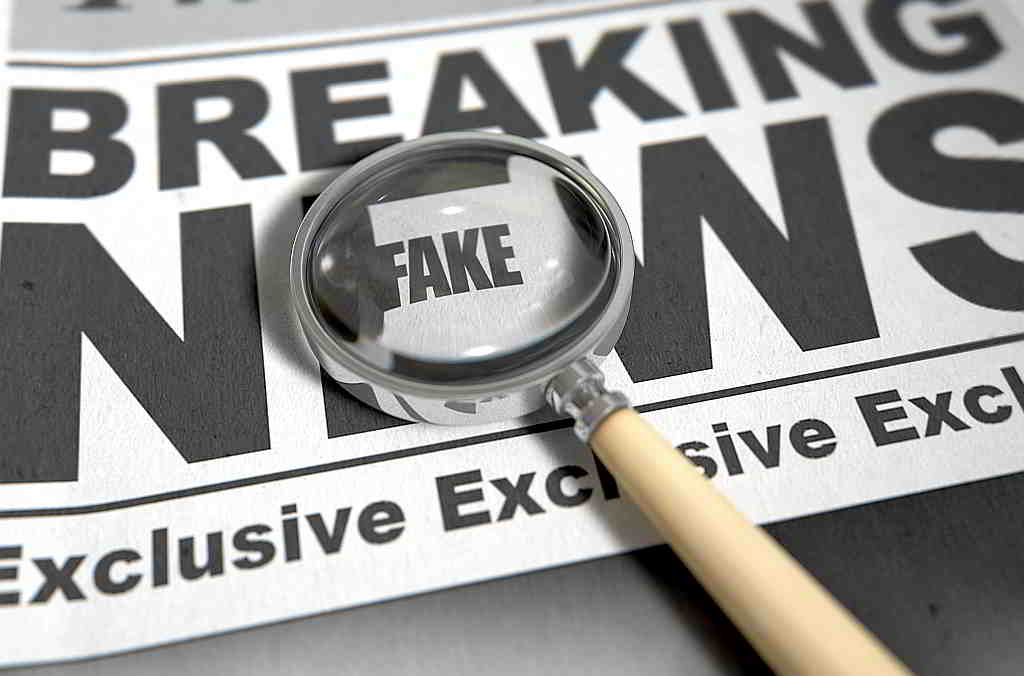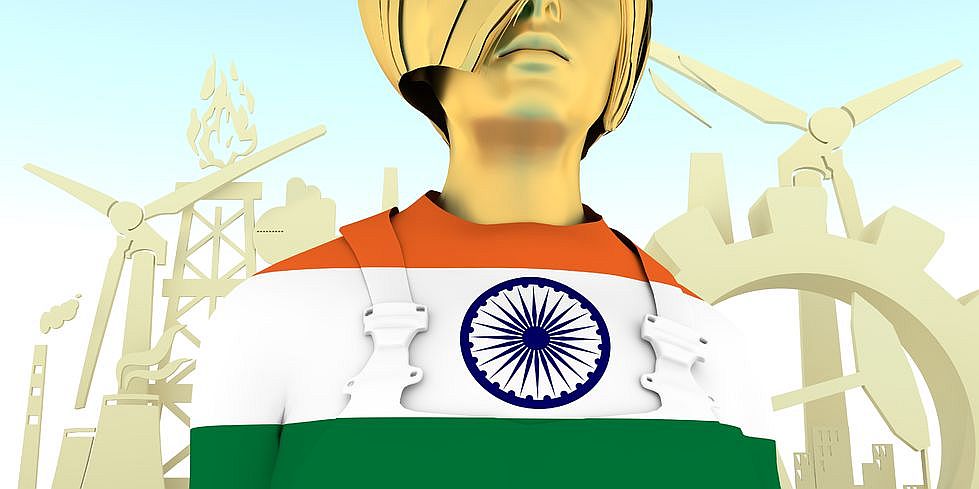In the wake of COVID-19 and its impact on the world, we check the news several times a day. This news comes to us through a variety of traditional and digital news channels. Digital channels, such as news apps, instant messaging apps, social media sites (like Facebook or Twitter) disseminate news faster than traditional channels (newspaper, TV, radio). And who listens to the radio or watches TV these days? For most of us, our source of instant news is a messaging app like WhatsApp or one of the news apps (every newspaper now has a news app). For others, it could be a social media platform like Twitter, Facebook, or Instagram. While we are fortunate to have so many sources of news, and to receive news instantly, there is a downside to that too. These channels are now being misused to spread fake news and this can have serious implications on our mental health and on society, in general.
— Brian Pereira, Founding Editor, Digital Creed
There are people who take advantage of the situation and try to induce fear by spreading false news. But we may also be unknowingly be spreading false news, by forwarding these messages to others in our circle of trust.
An incident caused by Fake News
Very recently, there was an incident in Bandra (W), a suburb in Mumbai. This happened during the lockdown a few weeks ago. A restless crowd had gathered at the station and the police had to resort to a minor lathi charge.
It turns out that the people who gathered there were largely migrants who came to the city of Mumbai for employment. They had come to the station because they heard the trains are starting and that meant they would be able to return home.
Of course, this was not true.
On further investigation it was found that someone had spread this message through a WhatsApp message that was forwarded to others – and this message spread like wildfire in a few minutes.
That is an example of how fake news can cause social unrest and turmoil.
And this is the reason why the mobile networks are shut down in Kashmir where there is political upheaval. If you were in Kashmir last year, you would not have been able to send WhatsApp and SMS messages.
How would you react to this news?
How would you react if you were to receive a WhatsApp message from a known or unknown source that said either of the following:
- All shops in your area to remain closed for two weeks
- A certain bank (in which you have an account) is in the red/bankrupt and will be freezing accounts
- Tomorrow is a bandh so trains and buses will not be functioning
- A certain political leader has been assassinated
- The stock market is going to crash to the lowest levels in modern times
Human beings are impulsive by nature, and tend to react impulsively to such news. You would likely react to this fake news by rushing to the nearest shop to buy stores; or you’d go to your bank to withdraw all your savings; or you would probably forward this message to all your friends and relatives.
Do you remember the scenes outside banks when demonetization was announced in November 2016? There were long queues at the banks with people standing in lines for hours to withdraw cash. The same scenes, albeit with more aggressive crowds, were witnessed when a certain cooperative bank in Maharashtra state went bankrupt due to malpractices that resulted in bad loans or non-performing assets.
Fake news could lead to mass protests, riots, and a breakdown in law and order. The special reserve forces or the army would have to be brought in to control the situation. Fake news can start wars, and we have documented historical examples.
What’s worse, this news would disturb you and others, cause anxiety and even depression.
And it isn’t even real news!
What is Fake News?
Fake news is Disinformation. It is fabricated news with twisted or inaccurate facts. It is intentionally spread through traditional media and social media. This disinformation comes from an authentic/credible source or is made to appear as if it is authentic.
But fake news isn’t a new concept and has been around for decades. This goes back to a period between 32 to 30 BC. Octavian (Julius Caesar’s adopted son) used fake news against Marc Anthony, which started the final war of the Roman Republic (32 BC to 30 BC).
It is also called Yellow Journalism, fabricated news, junk news, pseudo-news, alternative facts, hoax news, and satire.
The term “Fake News” was thrust into the spotlight following the 2016 presidential election, particularly after US investigations into Russian meddling (more on this later). It was popularized by President Donald Trump who openly told reporters that they were creating “Fake News”.
Why do people create Fake News?
Some of the reasons why people create fake news are:
- To deceive or to harm
- To cause social disruption or to disrupt democracy
- To influence a certain action, like voting for a particular candidate or lobbying
- To cause political disturbances or even war.
- To spread inaccurate propaganda (especially during elections)
- To increase TRP ratings and viewership
- Hactivists create fake news to influence others to protest online and affect change
Why the media sensationalizes news
While fake news is created by unauthentic sources, it is not uncommon to see authentic news sources like media houses, producing exaggerated or inaccurate news, which is a type of fake news.
The media strives to increase viewership, TRP ratings, and visitors to news sites. The high numbers will bring in more advertisers and hence more revenue. And so, editors often try to sensationalize the news, and this is rampant with the tabloids in the UK. Bold, catchy headlines with “scoops” or “tell all” stories are bound to attract readers. Newspaper reporters sometimes distort, exaggerate, or twist the facts, without verification, to create sensational news.
And we see this happening a lot during elections.
Political parties establish their own media teams who spread propaganda through messages on social media.
Examples of Fake News
Political meddling by nations is another example. For instance, during the U.S. elections in 2016, the Russians used Facebook to spread fake news and influence voters to vote for Donald Trump. Facebook identified as many as 50 campaigns spreading fake news from around the world.
During the final three months of the U.S. presidential campaign, the top-performing fake election news stories on Facebook generated more engagement than the top stories from 19 major news outlets combined!
Research by BuzzFeed amongst over 3,000 U.S. adults found that fake news headlines fooled American adults about 75% of the time. For most Americans, Facebook is a major source of news.
BuzzFeed News identified the top performing fake news story on Facebook in 2016 as “Obama Signs Executive Order Banning the Pledge of Allegiance in Schools Nationwide”. This news was published by a fake news site created to resemble ABC News, and it garnered over 2.1 million shares, comments and reactions on social media in just two months.
Deep fakes, make Fake News more convincing
Fake news creators are now using modern technology like Artificial Intelligence to create other forms of fake news. The result is called “Deep Fakes” and it employs audio and video formats, which appear more realistic and convincing.
An example of AI’s audiovisual magic comes from the University of Washington, where researchers have created a new tool that takes audio files, converts them into realistic mouth movements, and then grafts those movements onto existing video. The end-result is a video of someone saying something they didn’t. (Not at the time, anyway.)
Similarly, a person’s voice can also be manipulated using audio footage and special AI tools.
And we’ve all heard about images being “Photoshopped” – Photoshop is a professional image editing tool.
An example is a video featuring former President Obama. There is plenty of video footage available on the Internet for Obama. Researchers used algorithms to graft new mouth shapes onto the footage. The resulting video isn’t perfect (Obama’s mouth movements are a little blurry — a common problem with AI-generated imagery) but overall, it’s pretty convincing.
Watch it here on YouTube: https://youtu.be/UCwbJxW-ZRg
Read more: https://www.theverge.com/2017/7/12/15957844/ai-fake-video-audio-speech-obama
How to spot and react to Fake News
If you’ve read this far, you know all about fake news and also that it is becoming increasing difficult to distinguish between fake and real news. There are three fundamental approaches to check for fake news. According to Pratt Library, you should look for three things:
- Look for the source of the news
- What is the message about?
- Why was this created?
Look for the source of the news
Ask yourself who is the creator of the news. Does it come from a credible source that you are familiar with? You must look at the website link or the source of that piece of news.
- Is this a first-hand account, or is this being seen through the eyes of an editor?
- Do you know the person behind the presentation of the material?
- Is there an author by-line or introduction, and are you aware of the person’s expertise?
- Search the Internet for more information about the author.
- Is the author on the editorial team or a contributor?
- Has the author written any books or articles previously?
- What is the name of the organization creating or hosting the content?
- Check the website of this organization and look at the “about us” section on their site.
- Look at the URL of the news page. Does it have a tilde ~ symbol in it? If it does, it’s likely to be a personal site.
- Check for the ending of the website’s URL: .gov, .edu, .mil, and .org are more credible than websites that end in .com, .net, and many others.
What is the message about?
The second question in determining if something is fake news is by looking at the message itself and understanding what is being communicated. Review the following:
- What is the content of the message?
- Is this a unique piece of news or is it also published elsewhere?
- Is the website this news appears on updated regularly?
- Is this a blog or an actual news site?
- How old is the story? Look at the story date.
- Check the sources from the story and their expertise. Are they anonymous?
- Are sources in quotes? Quotes lend greater authenticity and credibility.
- Can you figure out if there is bias in the message? Is there a slant to the news?
- Is the news fact or is it more opinion?
- What viewpoint is being expressed and what is being left out?
- What is the format of the message? Look at visual elements and text elements.
Why was this created?
The third question in determining if something is fake news is by looking at why the message was created. Review the following:
- What motivated the creation of this message?
- Was this message created for profit?
- Is this news actually an advertisement or advertorial?
- Are the sources being paid?
- Is the author being paid?
- If the content lists itself as “sponsored content” that means an individual or organization is paying to display the content.
The CRAAP Test
It is always a good idea to verify information before you share it with others—in person or on social media. Do not forward WhatsApp messages unless you are sure about the authenticity of this message and verify its source.
Apply the CRAAP test which as developed by the Meriam Library at California State University, Chico. It has been widely quoted by many libraries and universities.
Look at the content for its currency—the timeliness of the information,
relevance—the importance of the information to your needs,
authority—the source of the information,
accuracy—the reliability and truthfulness of the information, and
purpose—the reason the information exists.
Conclusion
We live in the digital age and are more exposed to the news than ever. We also have tools that empower anyone to create and distribute news. So it is really important to discern between authentic and fake news.
Fake news can disrupt society and create social unrest, and even wars. So it is important for us to identify it and stop sending it to others in our circle of trust. Because we may unknowingly be spreading fake news.
Apply the CRAAP principle and use common sense and judgement to discern between fake and authentic news.









